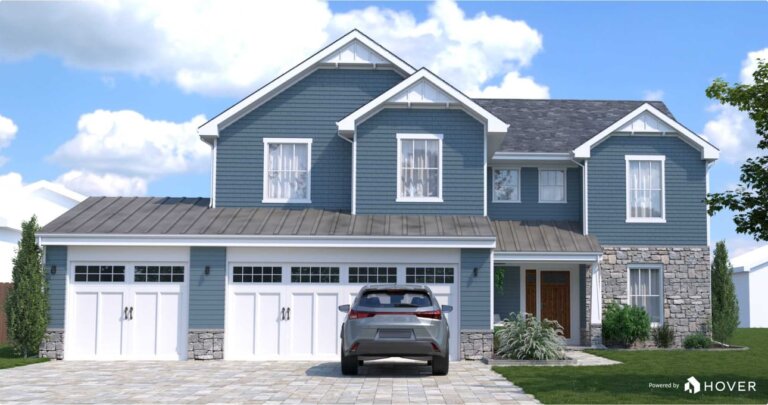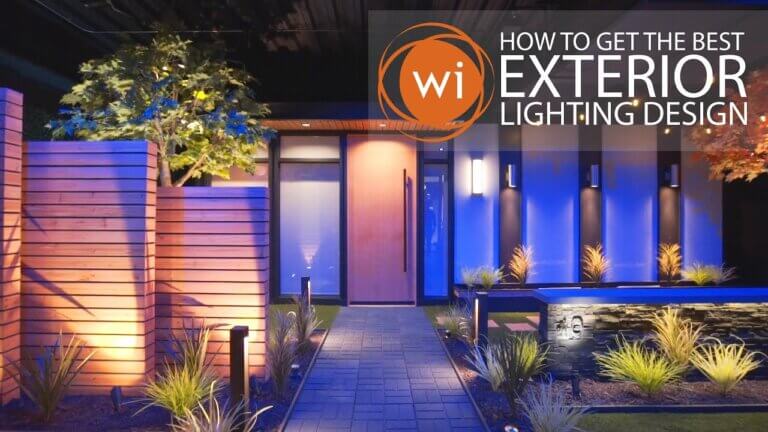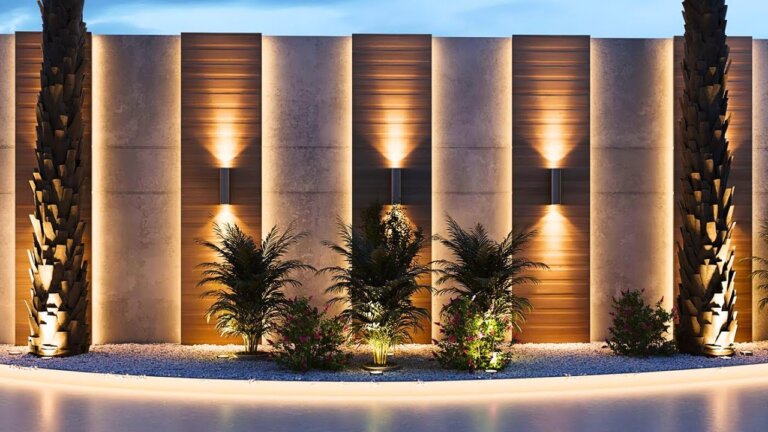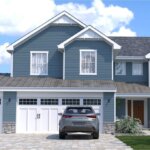Exterior home design sets the tone for your home’s personality. It reflects your taste and style.
What are the Different Styles of Exterior Home Design? Choosing the right exterior style can be overwhelming. There are many options available. From modern minimalism to rustic charm, each style has its unique appeal. Understanding these styles helps you decide what fits your vision. Whether you’re building a new home or renovating an old one, knowing the different styles can inspire your choices.
This blog will guide you through various exterior home designs. Discover the features and elements that define each style. Get ready to explore and find the perfect look for your home.
:strip_icc()/white-modern-house-curved-patio-archway-c0a4a3b3-aa51b24d14d0464ea15d36e05aa85ac9.jpg)
Credit: www.bhg.com
Introduction To Exterior Home Design
Exterior home design is crucial for a house’s look. It sets the first impression. A beautiful exterior adds value and charm. People often judge a home by its outside appearance. Choosing the right design makes your home stand out.
The Importance Of Exterior Design
An intelligent exterior design adds to curb appeal, presenting a more hospitable house for guests and future homebuyers. It adds value to the house and welcomes one into it. Other than the aesthetic function, the design at the exterior also plays a very functional role in durability and protection against the elements of weathering. An attractive-looking exterior with its well-kept look gives pride and a sense of satisfaction to the owners, full and hospitable.
Factors Influencing Design Choices
The exterior design for any place requires several factors to combine, and all of these may influence the eventual design to be used:
- Climatic Influence: Weather in your area significantly impacts material choices. Homes built in colder areas require insulation materials that can sustain bad weather. Houses built in warm areas use reflective surfaces.
- Personal style: Major decisions regarding colors, textures, and architectural style are highly influenced by the owner’s preference. Some like the modern minimalist view, while sticking to classical or rustic look and feel.
- Budget Constraints: It is often because of financial capacity that the coverage of renovation outdoors is determined. High-end material and custom-designed may be costlier, yet there are their budget-friendly alternative which can deliver a stylish exterior.
- Local regulations regarding: constructions provide limitations based on zoning, through which specified homeowners have to opt for set of materials and colours or limited alteration in construction and so forth. ‘ By considering such factors one can gain a better insight and thereby help homemakers in redesigning the outlook or exterior in respect to aesthesis as well as practicable and serviceable.
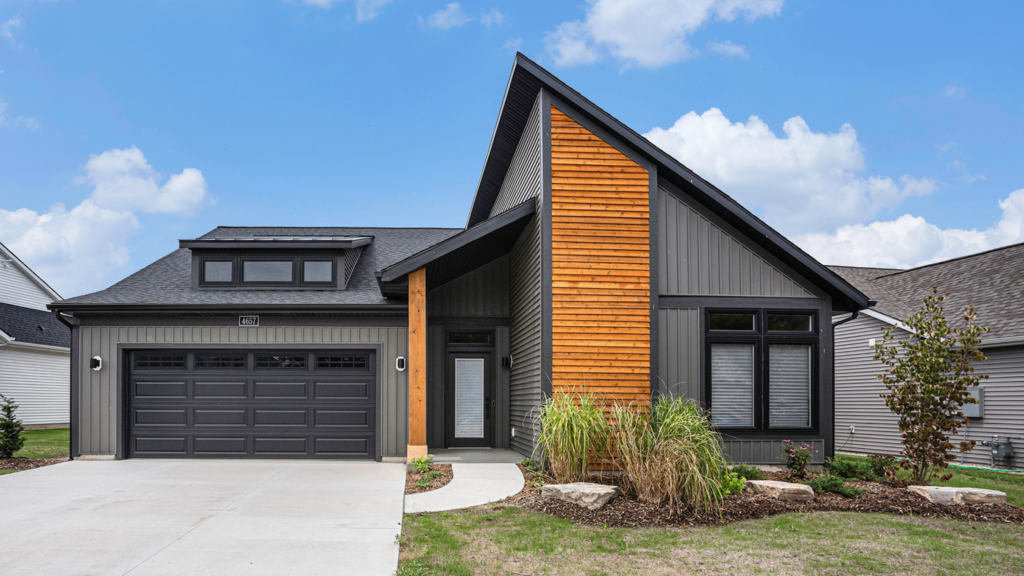
Credit: eastbrookhomes.com
Traditional Home Styles
Colonial Homes: Timeless Elegance and Symmetry
Colonial homes are one of the most symmetrical timeless classics that reflect perfect balance; for this reason, many homebuyers adore their architectural style. The characteristic feature of the colonial homes includes a central front door with equal window spacing on either side of the front door, thus creating an appealing façade that is warm and welcoming.
The house styles come with steep, gabled roofs, adding much dignity to the external appearance of the colonial homes made of brick or wood. Many designs include dormer windows that not only enhance aesthetic appeal but also let in quite a lot of light into upper-level rooms. The interior usually has formal layouts, with most having a central hall opening into well-defined areas.
Colonial homes are definitely one of the most traditional and classic architectural styles, envied by every other homeowner and real estate enthusiast in the United States. Their timeless design, combined with functionality, makes them forever popular.
Victorian Homes: Ornate Designs with a Touch of Romance
The Victorian homes are known for their intricate details, vibrant colors, and unique architectural elements, and certainly cannot go unnoticed within a neighborhood. Characterized by a very ornate design, these homes typically feature decorative towers, turrets, and wrap-around porches, which make a rather dramatic and interesting sight.
The Victorian architectural style is primarily characterized by using gingerbread trim elaborately decorative around windows, doors, and eaves for elegance and charm. Roofs are generally steep and multi-angled, adding to the grandeur of the design. Most Victorian homes boast beautiful stained glass windows that add to their artistic appeal and allow colorful light to filter through interiors.
The Victorian era housed ornate exteriors with the most delicate craftsmanship, signifying an age of artistic expression and architectural creativity. Whether painted bold in a contrasting color or subtle pastel, these homes make statements exuding sophistication, with an appeal to vintage charm.
Choosing the Right Traditional Home Style
Both Colonial and Victorian homes have different sets of advantages that best fit different tastes and lifestyles. If you want something structured and symmetrical, with echoes of timelessness, then a Colonial home could be your best choice. But if you are one of those people who appreciate intricate details and historic charm, then maybe a Victorian home is what you are looking for.
Knowing the characteristics of traditional home styles will give you an educated decision when either buying, building, or simply admiring classic architecture.
Modern Home Styles

Mid-Century Modern Houses: Eternity in Simplicity and Functionality
Mid-Century Modern houses between 1940s and 1960s developed a name for a simple, unobtrusive shape and harmonious integration with environment. Mid-Century Moderns have a strong accent of clean lines, rectangular forms, and expansive spaces and a living environment that is both functional and fabulous.
Perhaps one of Mid-Century Modern’s most distinguishing aspects is its oversized windows, sometimes even extending to a height of a full floor, allowing copious sunlight and offering panoramic view of outdoors. Mid-Century Moderns use natural materials such as wood, rock, and brick, and in them, seamlessly blend with environment.
For interior, Mid-Century Moderns have an open-plan living, demolishing unnecessary walls to yield a roomy, airy environment. Bright and bold colors such as yellow, blue, and orange impart character to spaces indoors. Mid-Century Moderns’ mantra is one of function, with a purpose to utilize each feature in a manner that looks fabulous but doesn’t at any cost sacrifice function for form.
Enduring beauty in its form, Mid-Century Moderns have become a go-to for homeowners who appreciate a nostalgic touch and modern comfort.
Minimalist Houses: Elegance in Simplicity
Minimalist houses embody simplicity in its best form, offering a simple, unobtrusive shape that inspires calm and tranquility. Adopting a lesson in “less is more,” Mid-Century Moderns discard unnecessary ornamentation and accent functionality, proportion, and harmony
A typical minimalist home features sophisticated, peaceful colors in shades of white, gray, and black, creating a sophisticated and serene atmosphere. Simple and modern furnishing with less decor, with many times featuring clean-lined and geometric shapes, decorates such a home. Glass, metal, and wood feature predominantly, providing a level of refinement and simplicity to a room.
A key principle in living in a minimalist manner is intentionality—all items in a home have a purpose. Open spaces, hidden spaces, and cleared tables and shelves convey a peaceful and organized atmosphere.
Minimalist homes will work for homeowners who appreciate a calming, untroubled living atmosphere. By getting rid of distracting items and featuring only significant items, such a home creates a refreshing oasis for life’s hustle and bustle.
The Best Style for a Home Today
Both Minimalist and Mid-Century Modern residential types have positive factors, with each featuring a specific desire for form and function and a specific pace and character in life. For homeowners who appreciate vibrant colors, expansive spaces, and organic materials, a Mid-Century Modern home will work for them perfectly. For homeowners who appreciate clean, monotonous colors, and a lack of ornamentation, a Minimalist home will work for them perfectly.
Knowledge about such modern residential types will allow one to have a home that reflects one’s personality but brings comfort and function. For homeowners who appreciate ageless character and homeowners who appreciate modern simplicity, such residential types have infinite sources of motivation for modern living.
Contemporary Home Styles: Modern Innovation and Sustainability

Innovative Design with Clean Lines
Contemporary homes boast unique architectural shapes combined with clean lines and open spaces to provide an overall sleek modern look. Other than traditional architecture, asymmetry and bold geometric designs are at the heart of contemporary architecture in every different house.
Some of the marked characteristic of the contemporary homes involves the extensive large windows through which abundant light natural light manages to fill a house inside making it bright hence cutting down dependency on artificial lights. Most of these contemporary designs showcase open floor plans that tie in living, dining, and the kitchen altogether, making up a single vast, useful area.
Other characteristics include the use of advanced technology, such as smart home features that allow the house’s living areas to be controlled with ease: automated lighting, climate control, and advanced security features. Energy-efficient appliances are also commonly used to reduce electricity consumption and promote eco-friendly living.
Sustainability and Eco-Friendly Materials
Modern homeowners are now thinking about the environment, and modern homes reflect this with eco-conscious building materials and energy-efficient designs. Many structures use recycled steel, bamboo, reclaimed wood, and other sustainable materials to minimize environmental impact while maintaining a stylish and modern aesthetic.
Some of the more common features in today’s homes include solar panels, enabling owners to save on energy costs and lessen their reliance on conventional sources of electricity. Water-saving fixtures, such as low-flow toilets and smart irrigation systems, further enhance efficient water use in these environmentally friendly homes.
Landscaping in modern home designs also often involves the use of native plants that have lower water and maintenance requirements. This helps ensure local ecosystems can thrive while making outdoor living spaces more sustainable. Many modern homes also include green roofs and vertical gardens to further make them eco-friendly.
Why Buy a Contemporary Home?
If you enjoy cutting-edge design, smart technology, and sustainable living, a modern house may be your dream. The house effortlessly captures functionality, style, and environmental awareness all into one ultimate wish of any modern homeowner.
Contemporary architecture presents innovative solutions to meet today’s need for lifestyle and prepare for the future: from sleek and light-filled space to high-tech, eco-friendly homes.
Rustic Home Style: Warm, Inviting, and Nature-Inspired

Farmhouse Style: Simple, Charming, and Welcoming
Farmhouse homes combine beauty, simplicity, and utility, and thus an eternal joy for all with a love for rustic refinement. That ubiquitous big front porch is a defining feature of farmhouse style, providing a lot of space to sit and lounge, have coffee, or enjoy an outdoors view.
Farmhouse exterior tends to utilize natural materials, such as wood, rock, or brick, and these lend a warm look to a dwelling. There are big windows, and sunlight enters, illuminating your dwelling with a warm glow. Roofs rise high and simple, lending a traditional but utilitarian look of a dwelling.
Farmhouse interiors introduce an open-concept living in which living, dining, and kitchen spaces merge into a single unit. Wooden beams, shiplap walls, rustic finishes lend a warm, down-to-earth feeling. Pale-colored decor, such as soft white, warm grays, and earth colors, actually keeps a peaceful atmosphere in a dwelling.
From surrounded in country to cityscapes, farmhouse-style homes deliver an ideal blend of traditional character and modern comfort in high demand for any property owner.
Cabins: Nature-Lovers’ Retreats
For all who dream about a peaceful retreat in nature, the cabins offer an ideal retreat. Glancing at rustic heritage, these dwelling places are traditionally constructed with logs, rough-cut wood, and native stones, perfectly fitting in surrounding woods and hillsides.
Other defining features of cabin homes include gabled roofing to shed off heavy snows in colder environments. Several of them have rock chimneys and big fireplaces for added coziness and a warm glow, perfect for a cold winter evening in front of a warm flame.
Cabin-style homes have interior spaces with expansive and open spaces with floors most frequently using vaulted ceilings with wood-beam exposure. Enormous windows offering panoramic view of surrounding outdoors environment allow copious sunlight in, blending with outdoors even more.
Earthy colors, rustic furnishing, and woodwork crafted with hands cover cabin-style homes, providing a warm and cozy environment. For full-time living or for holidays, such homes represent a perfect blend of comfort and beauty of nature.
How to Choose Best Rustic Home Style
Both cabin and farmhouse-style homes embody rustic living in two forms. In case a cosmopolitan, welcoming environment with a dash of modernity is your desire, then your best bet could be the farmhouse home. In contrast, in case a cosy, nature-inspired retreat is your desire, then a cabin-style dwelling is your best retreat.
The traditional beauty of warm, simple sensations and strong contact with nature is produced through rustic types of dwelling, whether country, mountain, or lake style ones. Situated in rural areas, hills, or near a lake, such dwelling spaces assure a life full of calm and peace.
:strip_icc()/tudor-style-home-exterior-lush-landscaping-628aa053-0b135bb1d98a4d01974289c7d2c70217.jpg)
Credit: www.bhg.com
Mediterranean Home Styles
Spanish homes often have red tile roofs and white stucco walls. These homes usually feature archways and courtyards. The wooden doors are heavy and ornate. You will see ironwork on windows and balconies. Terracotta tiles cover the floors. The design aims to create cool interiors. Natural light plays a big role. These homes feel warm and inviting.
Italian villas are known for their elegance. These homes have stone walls and red roofs. Large windows let in lots of light. Balconies and terraces are common. Columns and arches add to the style. Gardens and fountains often surround the home. The goal is to blend indoor and outdoor spaces. This creates a relaxing atmosphere.
Craftsman Home Styles
Bungalows are one-story homes. They often have low-pitched roofs. Wide porches are common. Many have large, square pillars. These homes feel cozy. They blend with nature.
Craftsman homes have unique details. Handcrafted woodwork is popular. Stone accents add charm. Built-in furniture is a feature. Stained glass windows are seen. These details add character.
Choosing The Right Style
Your home should reflect your tastes. Think about colors you like. Consider the shapes and textures you enjoy. Some people love modern designs. Others prefer classic looks. The choice is yours. Trust your instincts. A home should feel right to you.
Look at the homes around you. Your house should fit in. But it can still stand out in a good way. Respect the style of your area. A modern home may not suit a historic neighborhood. Think about harmony. Blending in can also be beautiful.
Frequently Asked Questions
What Are Modern Home Exterior Styles?
Modern home exteriors often feature clean lines, large windows, and minimalistic designs. They may use materials like glass, steel, and concrete.
How To Choose A Traditional Home Exterior?
Choose a traditional home exterior by focusing on classic elements. Use brick, wood, and symmetrical designs to achieve a timeless look.
What Defines A Rustic Home Exterior?
Rustic home exteriors emphasize natural materials like wood and stone. They often include features like exposed beams and a cozy, inviting appearance.
What Are The Key Features Of A Farmhouse Exterior?
Farmhouse exteriors typically include large porches, gable roofs, and simple, functional designs. They often use materials like wood and metal.
Conclusion
Choosing the right exterior style enhances your home’s curb appeal. From modern to traditional, each design offers unique charm. Consider your preferences and lifestyle. Explore various styles before deciding. Consult professionals for personalized advice. A well-designed exterior increases your home’s value.
Enjoy the process and make your home truly yours.

My name is Mahi Uddin, and I’m a blog writer with over two years of experience specializing in creating engaging, informative content using AI tools. I contribute to InExDecor.com, where I share creative ideas and practical tips for transforming interior and exterior spaces into beautiful, functional environments. With a passion for storytelling and a knack for blending creativity with technology, I strive to craft blogs that not only inform but also inspire readers. When I’m not writing, you can find me exploring design trends or enjoying a good book with a cup of coffee.


